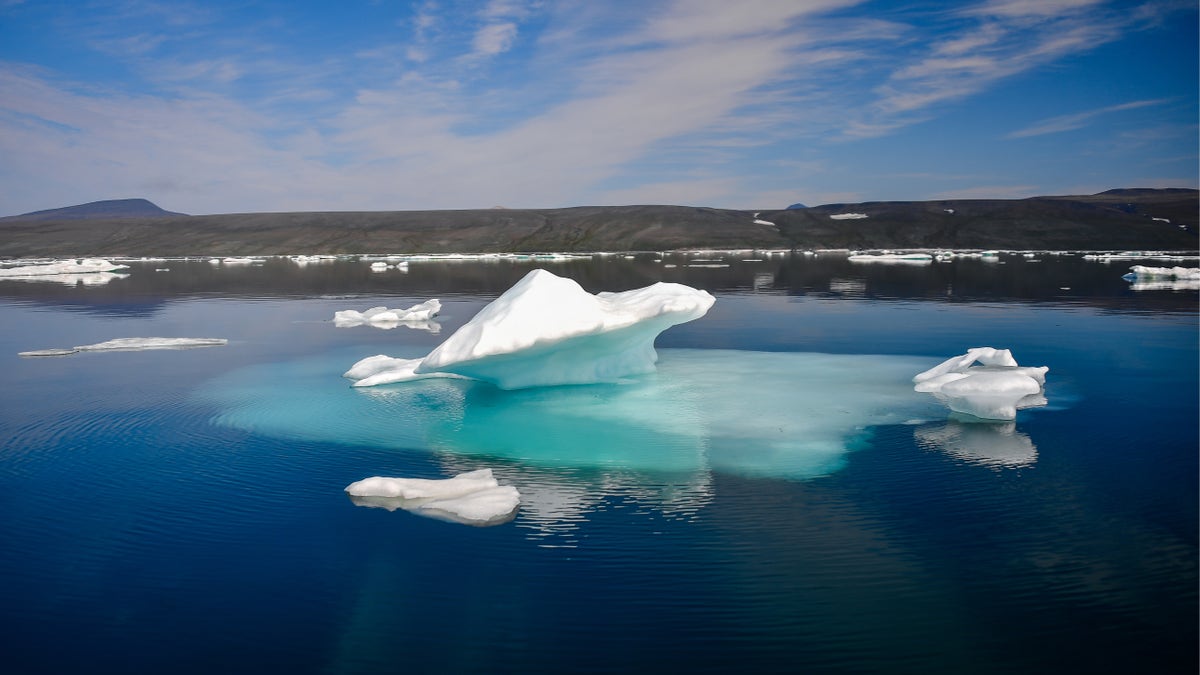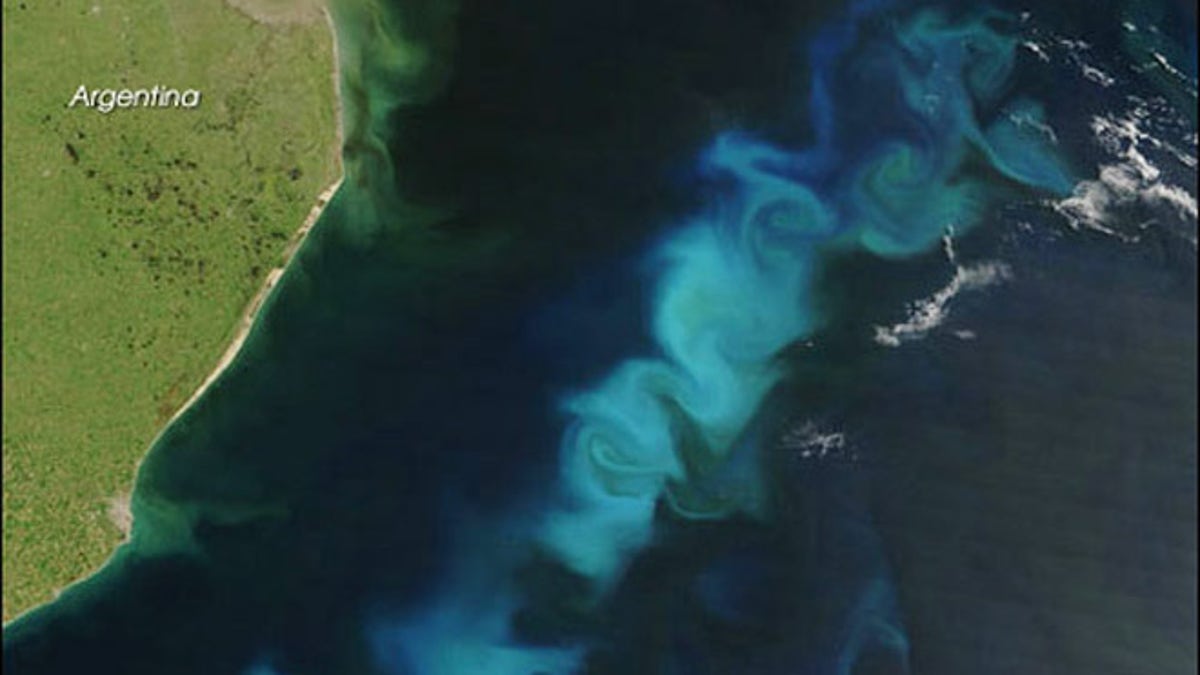Fox News Flash top headlines for July 13
Fox News Flash top headlines are here. Check out what's clicking on Foxnews.com.
A new study from researchers at Stanford University reports massive blooms of phytoplankton have dramatically enhanced the Arctic Ocean's ability to soak up carbon dioxide.
Published in Science Magazine, the study found that the growth of the tiny algae had increased by 57 percent between 1998 and 2018.
EARTH'S AVERAGE TEMPERATURE WILL RISE 'AT LEAST' 1 DEGREE CELSIUS OVER NEXT 5 YEARS, WMO SAYS
Using a new ocean color algorithm, the team from the college's Department of Earth System Science combed over a collection of measurements of the green plant pigment chlorophyll.

CHUKOTKA, RUSSIA - JULY 13, 2019: Ice floes in the Chukchi Sea off Wrangel Island, part of the Wrangel Island State Nature Reserve in the Arctic Ocean. Yuri Smityuk/TASS (Photo by Yuri SmityukTASS via Getty Images) (Getty Images)
The data — taken around the clock by satellite sensors and research cruises — was not easily obtained, as phytoplankton have adapted to the Arctic’s extremely low light.
The researchers found the rise in net primary production (NPP) of the phytoplankton, or how fast plants and algae convert sunlight and carbon dioxide into nutrients, was "driven primarily by increased phytoplankton biomass," likely due to an influx of newly introduced nutrients.
They theorized that the potential source of these nutrients could be other oceans or the Arctic's own depths.
Despite NPP increases initially only being linked to melting sea ice, the team observed continued productivity even after melting had slowed around 2009. While the Arctic phytoplankton were once metabolizing more carbon over more open water because of changes in ice levels, they have now become more clustered.
These conclusions reportedly suggest that the ocean could "support higher trophic-level production and additional carbon export."
Senior author Kevin Arrigo, a professor at Stanford’s School of Earth, Energy & Environmental Sciences, said the thickening phytoplankton biomass signaled a “significant regime shift” for the region.
However, there were some issues to note.
Because sea ice is melting earlier in the year, the phytoplankton ballooning may have been out of sync with the rest of the food web. A similar study authored by Université Laval's Marcel Babin suggests icepack reduction exposing the Arctic Ocean to sunlight promotes the phytoplankton biomass buildup.

Researchers used samples from the Sargasso Sea and coastal Oregon waters, finding four new viruses that killed the most abundant bacteria in the oceans (SAR11) in lab experiments. Here, a phytoplankton bloom in the South Atlantic Ocean. (MODIS Land Rapid Response Team at NASA GSFC)
In addition, as waters open up, there may be more traffic and the Arctic is taking in more greenhouse gas emissions, of which carbon dioxide makes up the vast majority.
CLICK HERE FOR THE FOX NEWS APP
Arrigo said that while the Arctic Ocean is absorbing more carbon, he didn't believe it would be able to "help us out of our climate problem.”
Skeptics have largely dismissed fears over man’s impact on global warming, saying climate change has been going on since the beginning of time. They've also claimed the dangers of a warming planet are being wildly exaggerated and question the impact that fossil fuels have had on climate change.


